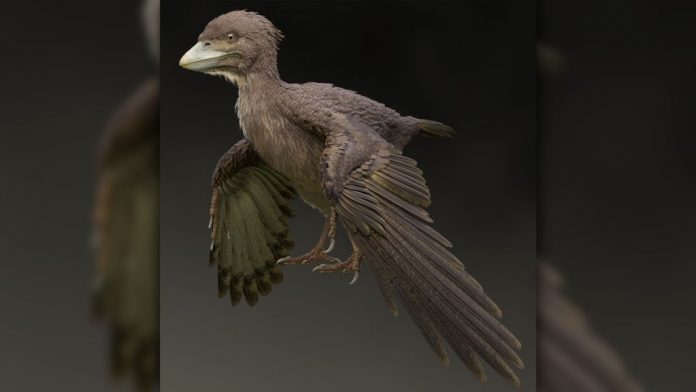Archaeologists combing through dinosaur fossil sites in Japan have discovered a previously unknown bird species that soared through the skies over 120 million years ago. The pigeon-sized bird holds clues to the evolution of modern birds, according to a study released Thursday.
The Archaeopteryx from the Late Jurassic (around 160 to 140 million years ago) found in Germany is generally considered to be the first known bird, but characteristics associated with modern birds didn’t begin to appear until the Cretaceous. The earliest known Cretaceous bird fossils are two-dimensional specimens found in north-eastern China. These birds lack a pygostyle, a triangular plate found at the end of the backbone to support tail feathers, which is a fundamental feature of modern birds.
Takuya Imai and colleagues describe a three-dimensionally preserved pigeon-sized bird fossil in central Japan that dates to the Early Cretaceous. This specimen, named Fukuipteryx prima, is the first species of primitive bird from this time period found outside China. The authors suggest that F. prima may have shared several features with Archaeopteryx, including a robust wishbone, unfused pelvis, and forelimbs, but F. prima also has a fully-formed pygostyle. Previous research has suggested that the pygostyle is one of the key flight adaptations in the early evolution of birds. However, the authors propose that the presence of the pygostyle with F. prima supports recent theories that it is merely a byproduct of tail reduction and unrelated to flight adaptation.








